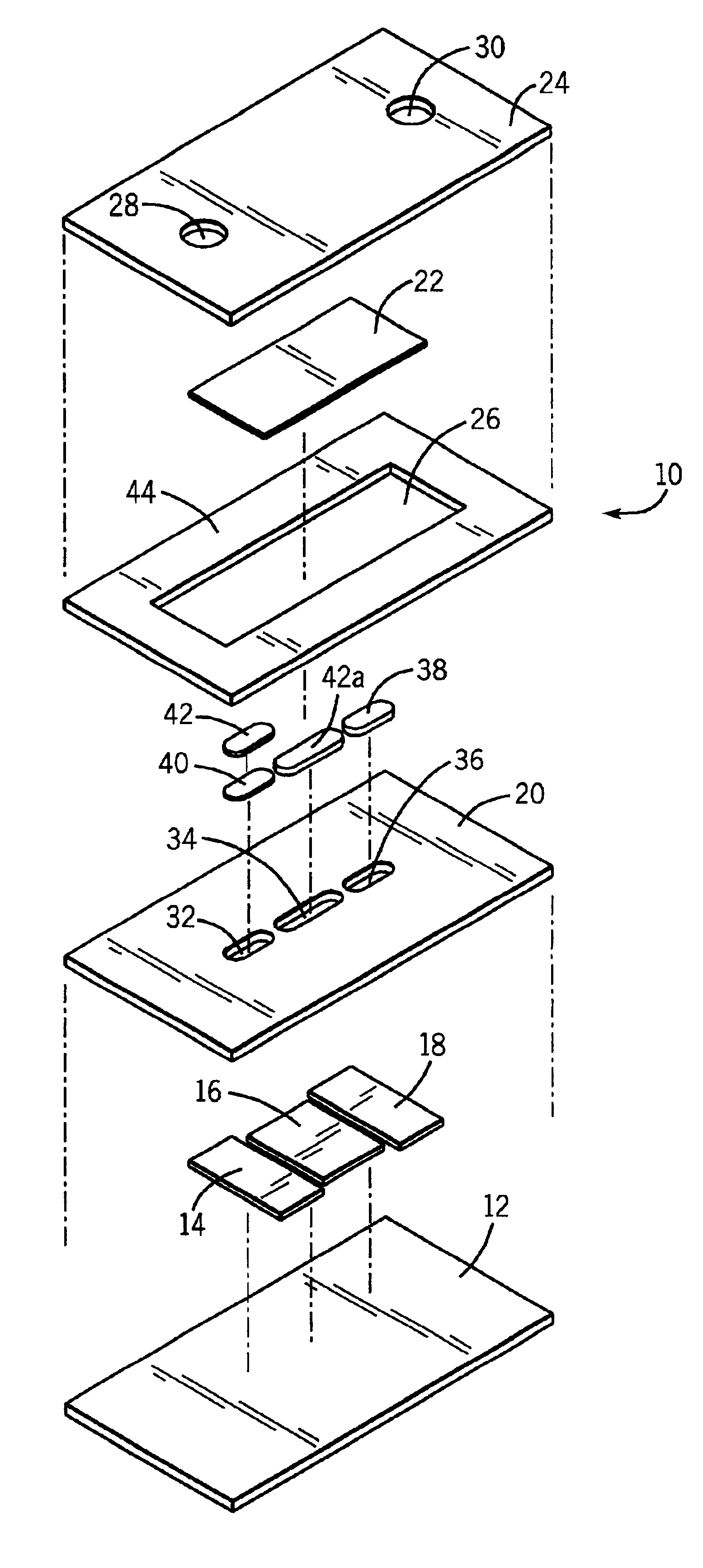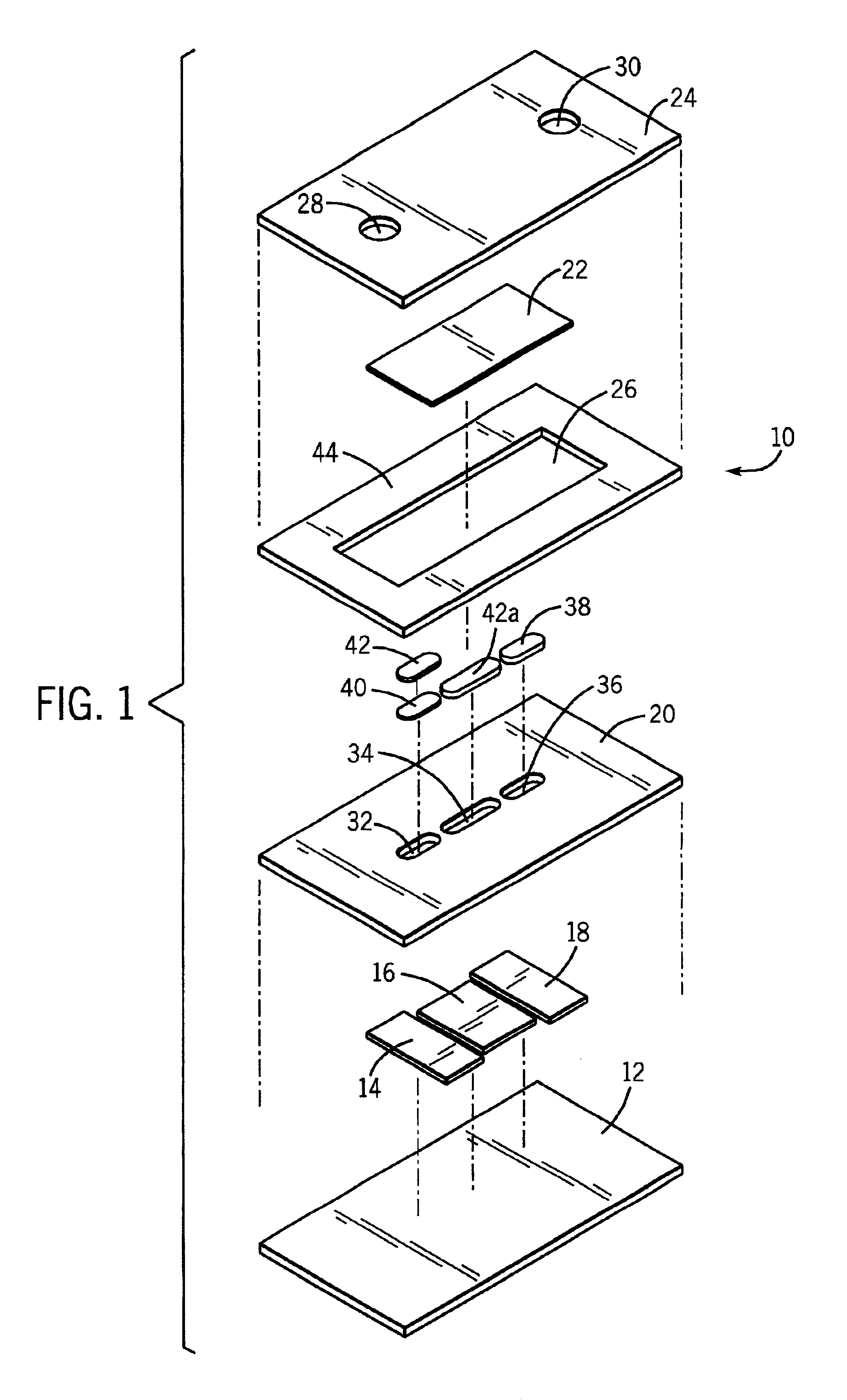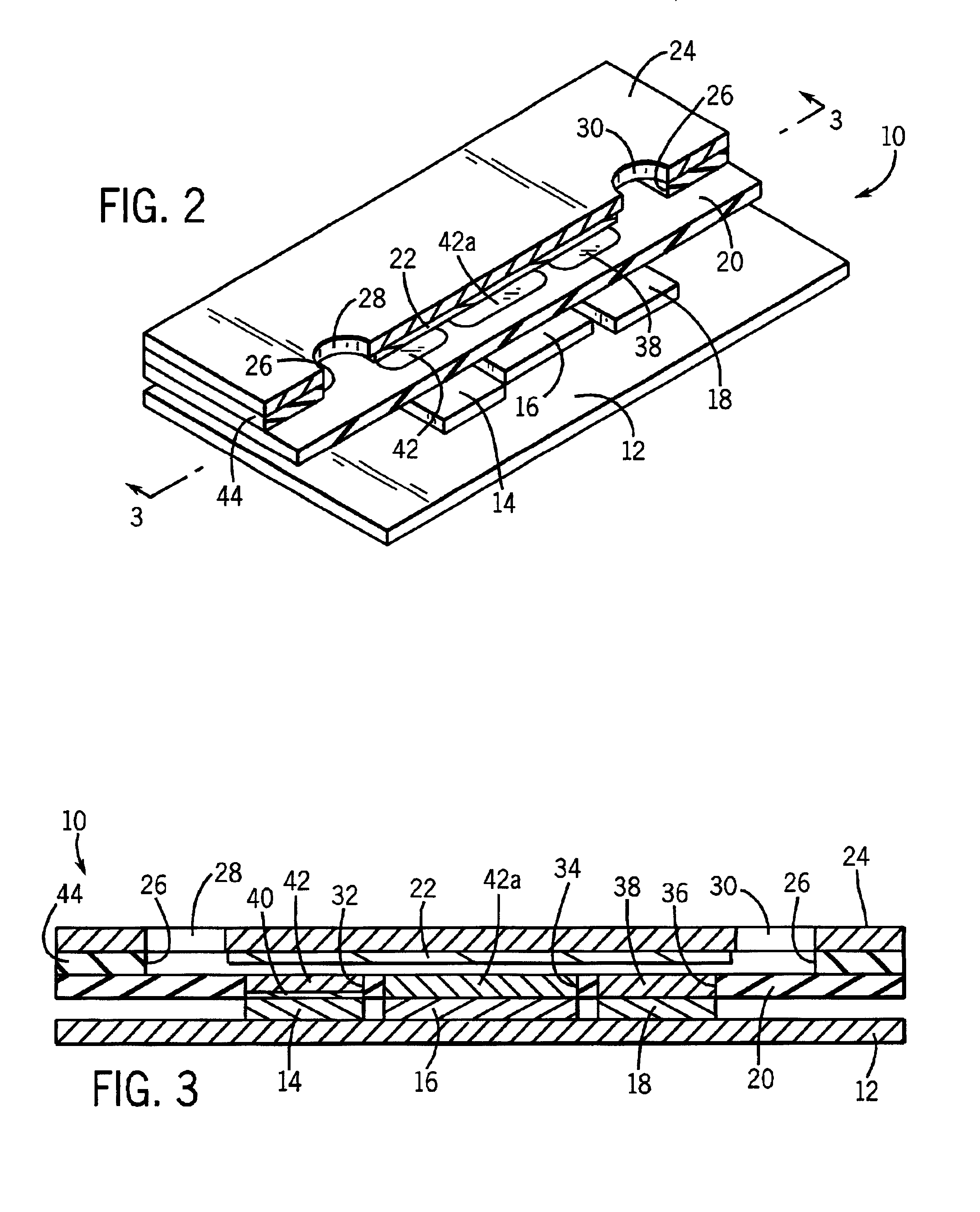Sensor having electrode for determining the rate of flow of a fluid
a technology of fluid flow and sensor, applied in the field of sensors, can solve the problems of increasing the volume of sample required, variable flow rate, and increasing the dimensions of the flow path
- Summary
- Abstract
- Description
- Claims
- Application Information
AI Technical Summary
Benefits of technology
Problems solved by technology
Method used
Image
Examples
example 1
This example illustrates a sensor suitable for monitoring the concentration of glucose in a biological sample with the additional capability of measuring the rate of flow of the biological sample. In this example, the working electrode is placed upstream of the flow rate-determining electrode. The sample passes over the working electrode before it contacts the flow rate-determining electrode.
The sensor comprises a working electrode made of platinum, a flow-rate determining electrode made of platinum, a reference electrode, and a counter electrode. Alternatively, the reference electrode and the counter electrode can be replaced by a dual-purpose electrode (i.e., counter / reference electrode) made of Ag / AgCl. The working electrode and the flow rate-determining electrode have deposited thereon a semi-permeable membrane to suppress interferences from electrochemically active interfering materials in the biological sample. Overlying the working electrode is a hydrogel membrane, which can ...
example 2
This example illustrates a sensor suitable for monitoring the concentration of glucose in a biological sample with the additional capability of measuring the rate of flow of the biological sample. In this example, the working electrode is placed upstream of the flow rate-determining electrode. The sample passes over the working electrode before it contacts the flow rate-determining electrode.
The sensor comprises a working electrode made of platinum, a flow-rate determining electrode made of platinum, a reference electrode, and a counter electrode. Alternatively, the reference electrode and the counter electrode can be replaced by a dual-purpose electrode (i.e., counter / reference electrode) made of Ag / AgCl. The working electrode and the flow rate-determining electrode have deposited thereon a semi-permeable membrane to suppress interferences from electrochemically active interfering materials in the biological sample. Overlying the working electrode is a hydrogel membrane, which can ...
example 3
This example illustrates a biosensor in which two flow rate-determining electrodes are used. The working electrode can be positioned such that the sample passes over a first flow-rate determining electrode prior to contacting the working electrode. After contacting the working electrode, the sample passes over a second flow rate-determining electrode.
The working electrode comprises the same materials and has substantially similar overlying layers as does the working electrode of Example 1. The flow rate-determining electrodes comprise the same materials and have the substantially similar overlying layers as do the flow rate-determining electrodes of Example 1. The counter electrode and the reference electrode comprise the same materials and have the substantially similar overlying layers as do the counter electrode and the reference electrode of Example 1.
In the embodiment of this example, both the flow rate and direction of flow of the sample can be determined. In order to perform ...
PUM
| Property | Measurement | Unit |
|---|---|---|
| depth | aaaaa | aaaaa |
| thickness | aaaaa | aaaaa |
| thickness | aaaaa | aaaaa |
Abstract
Description
Claims
Application Information
 Login to View More
Login to View More - R&D
- Intellectual Property
- Life Sciences
- Materials
- Tech Scout
- Unparalleled Data Quality
- Higher Quality Content
- 60% Fewer Hallucinations
Browse by: Latest US Patents, China's latest patents, Technical Efficacy Thesaurus, Application Domain, Technology Topic, Popular Technical Reports.
© 2025 PatSnap. All rights reserved.Legal|Privacy policy|Modern Slavery Act Transparency Statement|Sitemap|About US| Contact US: help@patsnap.com



